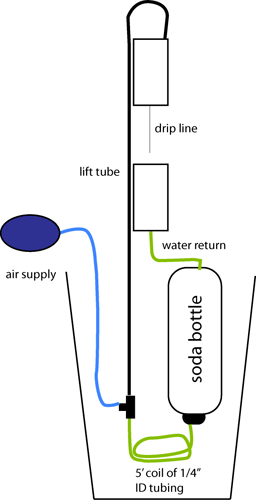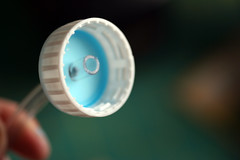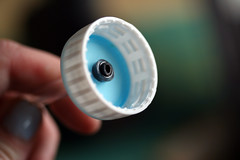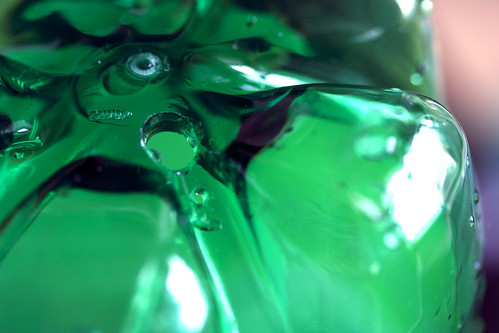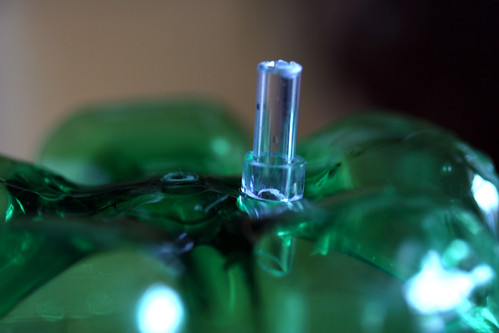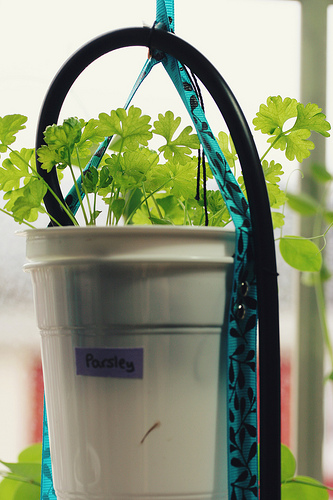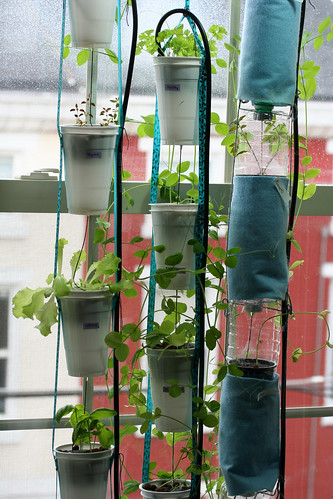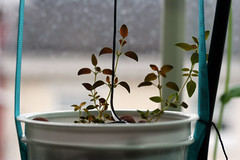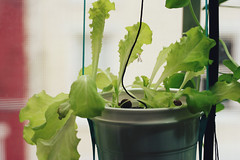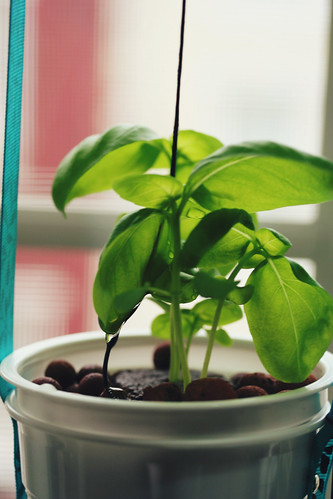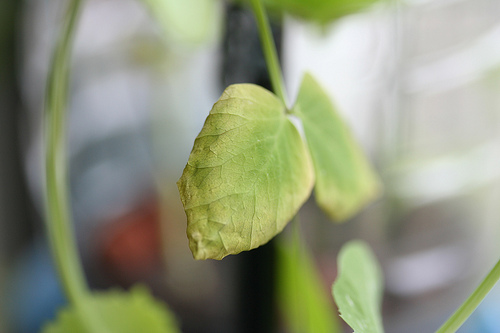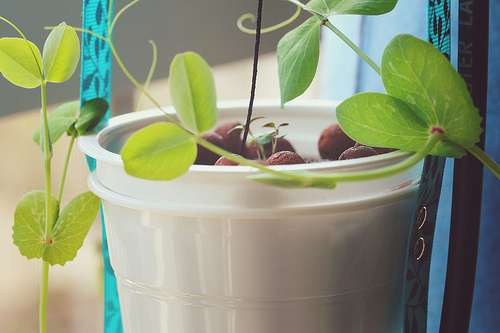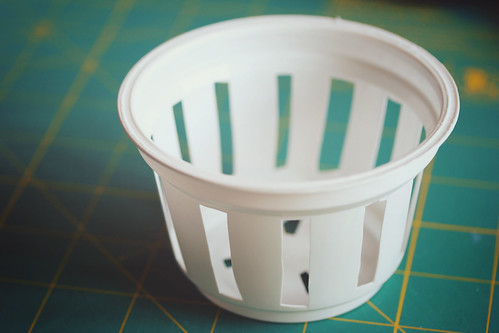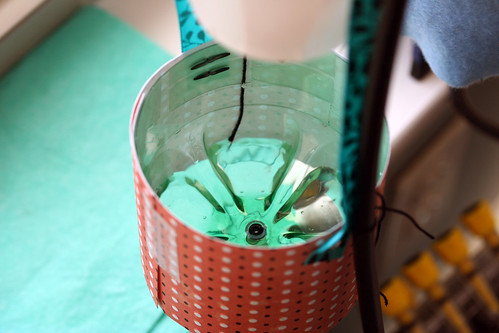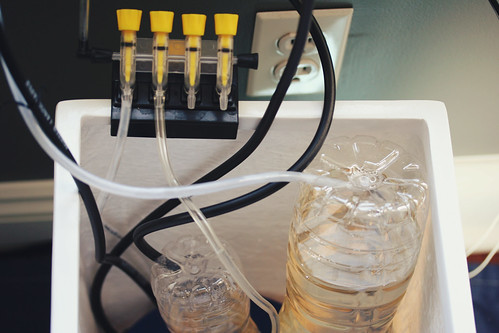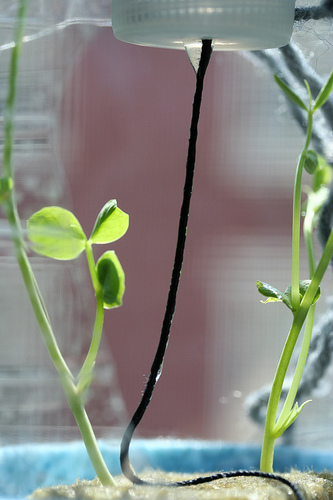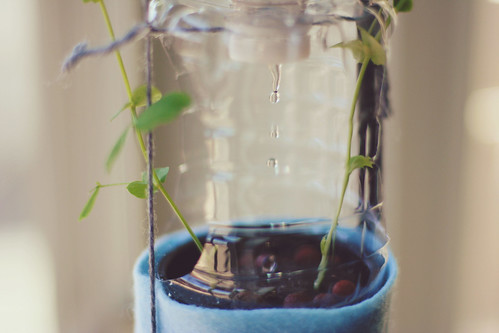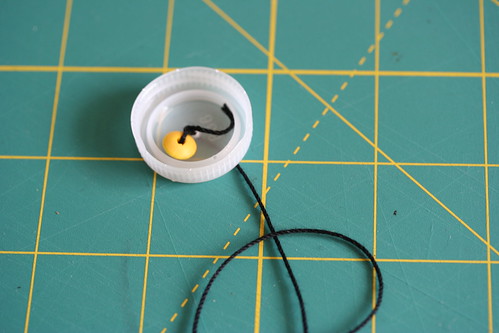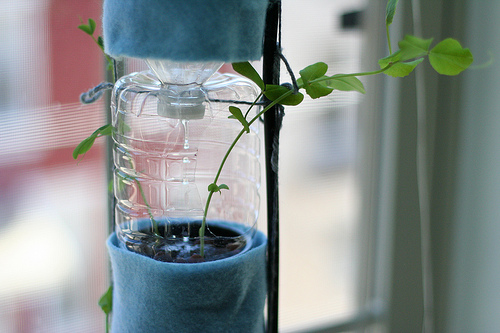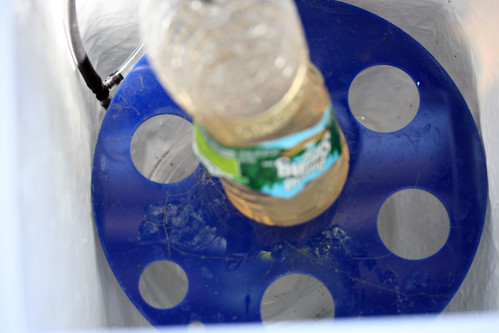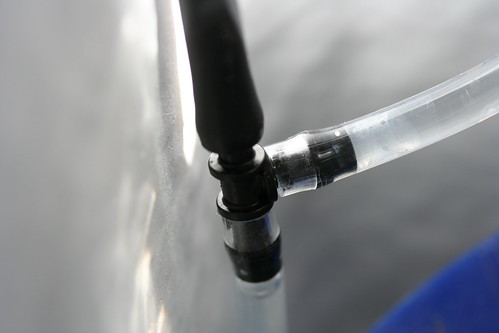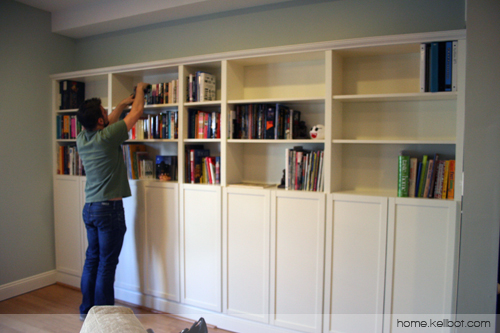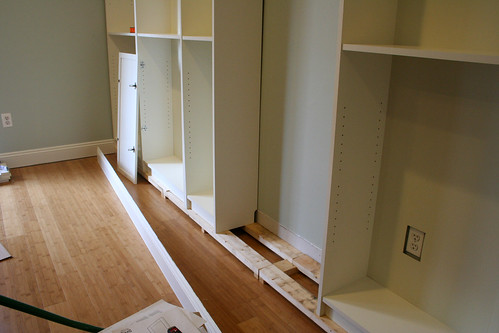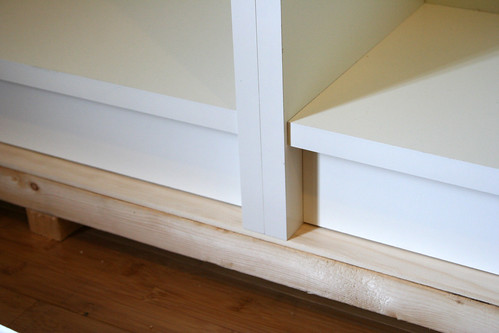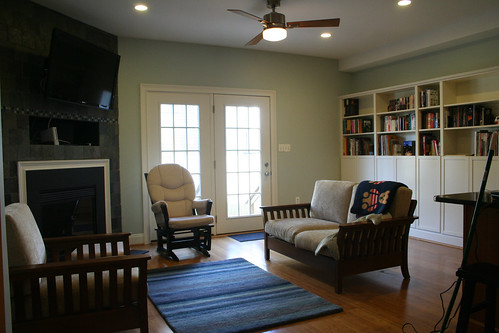Remember how I gave up on making baby food because it was crushing me emotionally? Well, these days I have a toddler brimming with teeth, and even a few molars in there. You’d think I’m well past the woolly world of pureed vegetables. You’d think that at 15 months, my daughter would be shoveling finger food into her mouth. And you’d be wrong.
Vegetables, she has decided, are not finger food. Vegetables are for throwing on the floor. I tried burying shredded broccoli in mac and cheese. She took a bite, chewed it, reached into her mouth, and pulled out the offending plant. She then handed it to me with a look that said “I think you lost this, here it is.”
Pouches of pureed vegetables (preferably with fruit mixed in) are the only way I can get most veggies into this kid. As a bonus, they’re fairly clean and she can self feed them. As an anti-bonus, they cost a goddamned fortune. Amazon’s Subscribe & Save brings the price down, but not nearly enough.

We saw the Infantino Fresh Squeezed system at Target, and I was intrigued by the idea of not having to mortgage our house to get Bitmap to eat some veggies. I also happened to be at Target for some post-miscarriage retail therapy, so I was totally into the idea of buying some stupid baby food thing I don’t really need. RevolvingDork was less convinced, but for $20 was willing to try it if it meant I would stop pouting at him. Oh and the reviews online were all very positive.
You guys, I am totally in love with this thing.
It is really weirdly satisfying to shove puree into little pouches with a plunger, and even more exciting to see Bitmap consume things like carrots and spinach. I’ve been making purees of pretty much everything. I’ll give her a store-bought pouch to sample, and if it’s a hit I will recreate it in my food processor. So far it’s great. She can eat them without my help, they’re relatively tidy, and oh thank god she is eating vegetables.
The pouches are disposable (though they do make a reuseable one), and they do cost a little more than I’d like. It’s still not a cheap way to feed your kid. But if I think of it as a bribe for eating vegetables it almost seems reasonable. And it’s still a hell of a lot cheaper than the store-bought pouches (most of which range from $1.25 to $1.90 per pouch).
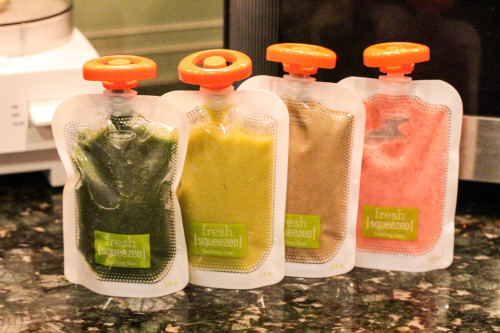
I throw equal parts cooked veggies and applesauce/pearsauce into the food processor and blend until smooth. If you are a super amazing mom who loves her children more than her sanity, you will probably pick some organic produce from your hobby farm and steam it lovingly before smashing it for your child. If you are like me, frozen or canned veggies are totally fine. Also, it turns out pre-made applesauce is WAY CHEAPER than buying fresh apples and saucing them. Just make sure to read the labels on everything to make sure there’s no added salt / sugar.
A can of pears + a can of peas is enough to make 4 pouches of food. They’re around $1 per can. Four disposable pouches works out to roughly $1.30. So add that all up ($3.30) and the cost per pouch is $0.82. More than I’d like, but far cheaper than the store bought ones.
I also make some yogurt + fruit pouches, which I keep in the freezer and serve as smoothies. Either run them under warm water for a bit or let them warm up in the fridge before serving. We gave one to Bitmap this evening after she bit her lip. It cured her hysteria instantly.
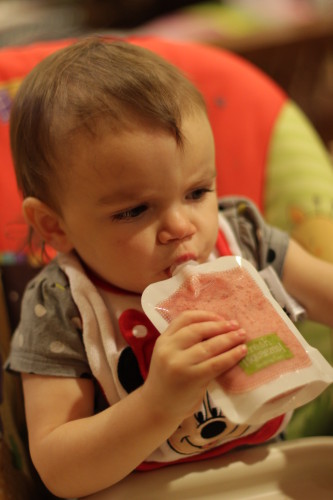
Here are some “recipes” that Bitmap likes. I use either fresh, frozen, or canned food as it’s available. Fresh veggies are great, but I won’t judge you if you’re too tired to do anything but crank the can opener. Smoothies are a good use for fruit that is looking slightly over-ripe. You may need to add a little water to get the consistency you’re after.
Strawberry Spinach Smoothie (makes 4-5 pouches)
1 cup greek yogurt
2 cups whole strawberries
1 cup steamed spinach (or kale)
Spinach Applesauce (makes 2-3 pouches)
1 cup steamed spinach
1 cup applesauce
Applesauce / Pearsauce and Veggies (makes 4-5 pouches)
1 cup steamed peas
1 cup steamed green beans
1.5 cups applesauce or pearsauce
